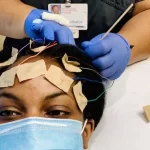- Version
- Download 9
- File Size 521.45 KB
- File Count 1
- Create Date January 30, 2024
- Last Updated January 30, 2024
Rand: Plagues, Cyborgs, and Supersoldiers
Advances in biotechnology within the past half decade have renewed questions about the use of biotechnologies in a warfighting context. Prior to advances of the past few years and with respect to nation-states, biological weapons were usually deemed too liable to inflict harm on one’s own forces to be of much strategic value; past military applications of genomics are viewed largely as misguided eugenicist pseudoscience; and, until recently, such technologies as brain-computer interfaces (BCI) were too unwieldy for the battlefield.
As of this writing in 2023, technological improvements— including messenger ribonucleic acid (mRNA) vaccines, the use of CRISPR (clustered regularly interspaced short palindromic repeats) gene sequences as genetic engineering tools, and advances in BCI—and their accessibility to both friendly forces and adversaries—could shift these strategic calculations. This report explores how recently achieved or likely future technologies change strategic choices for the human body as a warfighting domain.
The analyses and recommendations in this report should be of interest to policymakers in the biotechnology, defense, and intelligence communities, as well as to a general audience.
Attached Files
| File | Action |
|---|---|
| rand_rra2520-1-1.pdf | Download |









Be the first to comment on "Rand: Plagues, Cyborgs, and Supersoldiers"